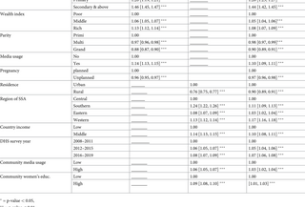If you’re a red meat enthusiast, no matter how many warnings circulate about its health hazards, parting ways with it seems nearly impossible.
Just like some continue to smoke despite the dire warnings on cigarette boxes, meat lovers find it challenging to forgo the succulent pleasure despite the connections to severe diseases.
Before we dive into the solution, let’s recap the latest insights regarding red meat consumption for those unfamiliar with the recent warnings.
Over the years, experts have acknowledged the potential harm of consuming large quantities of meat, but they’ve disagreed on the specific dosage, frequency, and extent of these risks. In July 2023, an extensive review was published in the Journal of the European Society of Cardiology (ESC), shedding light on the long-term impact of red meat on health.
The review scrutinized numerous past studies, revealing that consuming red meat may elevate the risk of heart disease and diabetes. These findings align with other pivotal studies linking this favorite food to certain types of cancer.
However, it’s evident that if you’re a meat enthusiast, these findings won’t lead you to become a vegetarian, nor is that the goal. Many doctors and nutritionists now believe that people shouldn’t eliminate entire food groups from their diets. This approach is pragmatic because it recognizes that it’s unrealistic to shun these pleasures that make life enjoyable.
So, how can you continue to savor red meat while minimizing the associated health risks? To address this essential question, let’s break it down into several factors.
Choose Healthier Cuts of Meat
It’s crucial to note that when we mention red meat, we refer to all types of muscular mammalian meat, including beef, lamb, veal, goat, and pork. This contrasts the traditional categorization of meat into red and “white.”
You’ll find various types of meat with differing nutritional profiles within this category. Red meat, in general, is rich in essential nutrients such as iron, zinc, vitamin B12, and proteins. While these nutrients exist in plant-based products, they are more readily absorbed from meat.
On the flip side, red meat often contains substantial amounts of saturated fat, although the percentage can vary widely, from 1 to 25%, depending on the cut and rearing methods. Ground meat typically contains saturated fat percentages ranging from 2 to 9%. Leaner cuts typically have lower fat levels and can mitigate the risk of heart disease, diabetes, and cancer. While many associate fat with the primary source of meat’s flavor, high-quality, tasty beef doesn’t require excessive fat.
Some argue that Wagyu meat, originating in Japan and renowned as the “world’s tastiest and most expensive meat,” represents a healthier alternative to conventional red meat due to its higher unsaturated fat content. Although research on this claim remains limited, the rationale is understandable, even though these cuts also contain varying levels of saturated fat.
It’s essential to identify the most harmful types of meat to avoid at all costs. Processed meats, laden with saturated fats and preservatives, feature prominently on this list. Products like sausages, salami, hot dogs, and bacon pose significant health risks. The scientific review we mentioned earlier indicates that consuming just 50 grams of these foods may increase the risk of heart disease by an average of 26% and the risk of diabetes by an average of 44%.
Consider Cooking Methods
Recent studies have highlighted a surprising connection between certain foods, including meat, toast, and even chips, and an increased risk of cancer—but only when they are cooked to the point of burning. Consuming charred foods introduces Advanced Glycation End products (AGEs) into our bodies, which raise the risk of inflammation, heart disease, and various cancers.
If you prefer your meat to be well-done, it might be time to adjust your taste. Experts recommend reducing frying and grilling while opting for baking or cooking. This advice extends to other foods prone to charring, including bread and various traditional dishes.
Control Your Weekly Meat Intake
Limiting your weekly consumption of red, lean, cooked meat to no more than 450 grams is advisable to reduce the risk of cancer. The recommendation is even more stringent—up to 350 grams of unprocessed, cooked meat per week to mitigate the risk of heart disease.
Understanding that the World Health Organization also advocates limiting meat consumption to protect the environment and reduce pollution is crucial. To adhere to these guidelines, one should consume less than 98 grams of red meat weekly.
Consider incorporating more chicken and fish into your weekly menu if these recommendations feel challenging. These foods provide ample protein and nutrients while, as far as current knowledge suggests, posing fewer health risks than red meat.
We are all human, not machines, and there will be times when we exceed these recommended limits, even with full awareness of the potential health repercussions. The key takeaway from these recent studies is not to stop enjoying red meat altogether but to approach it with greater mindfulness. Over time, this conscientious approach may enable us to reduce consumption without feeling punished or overwhelmed.



